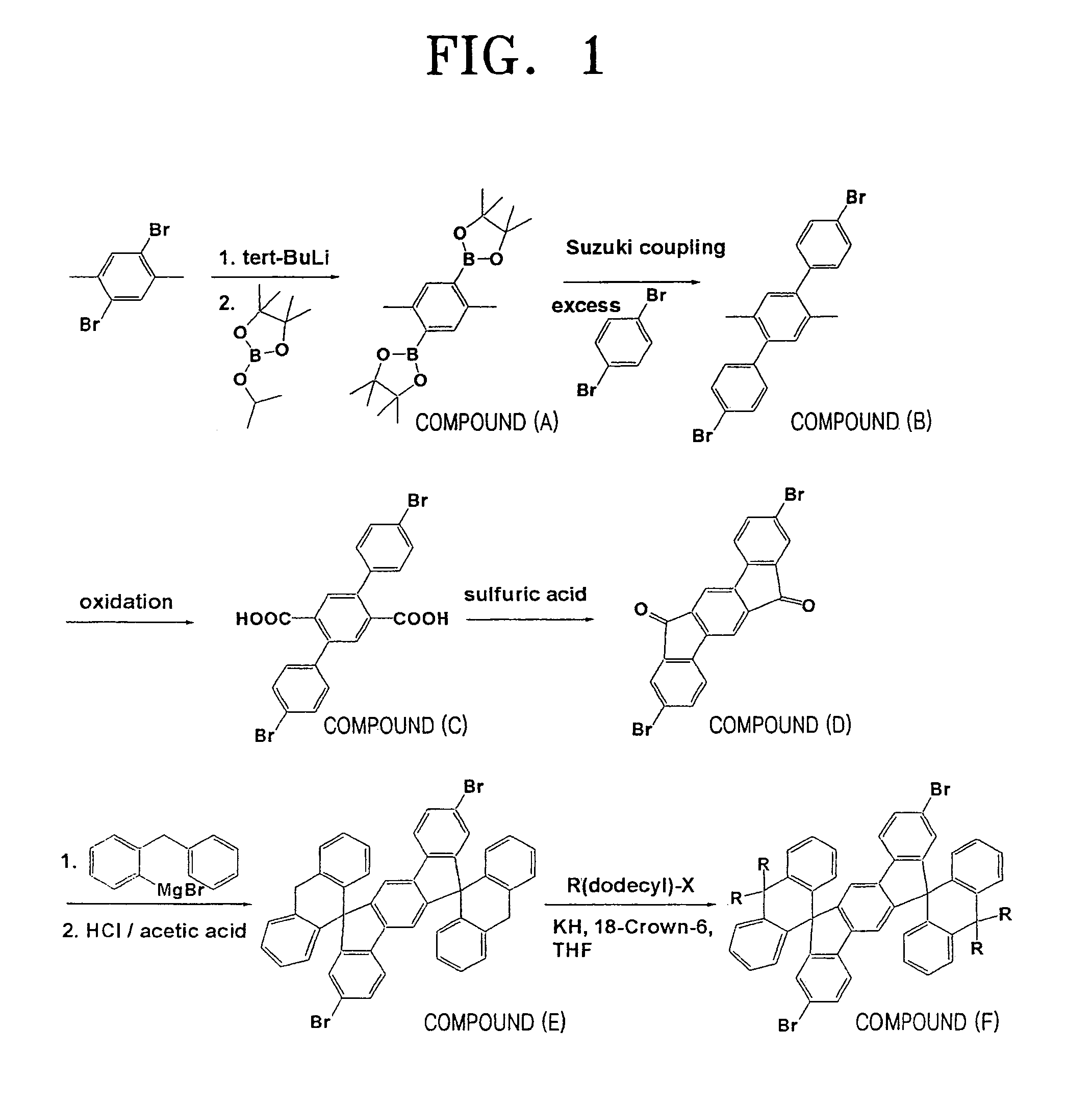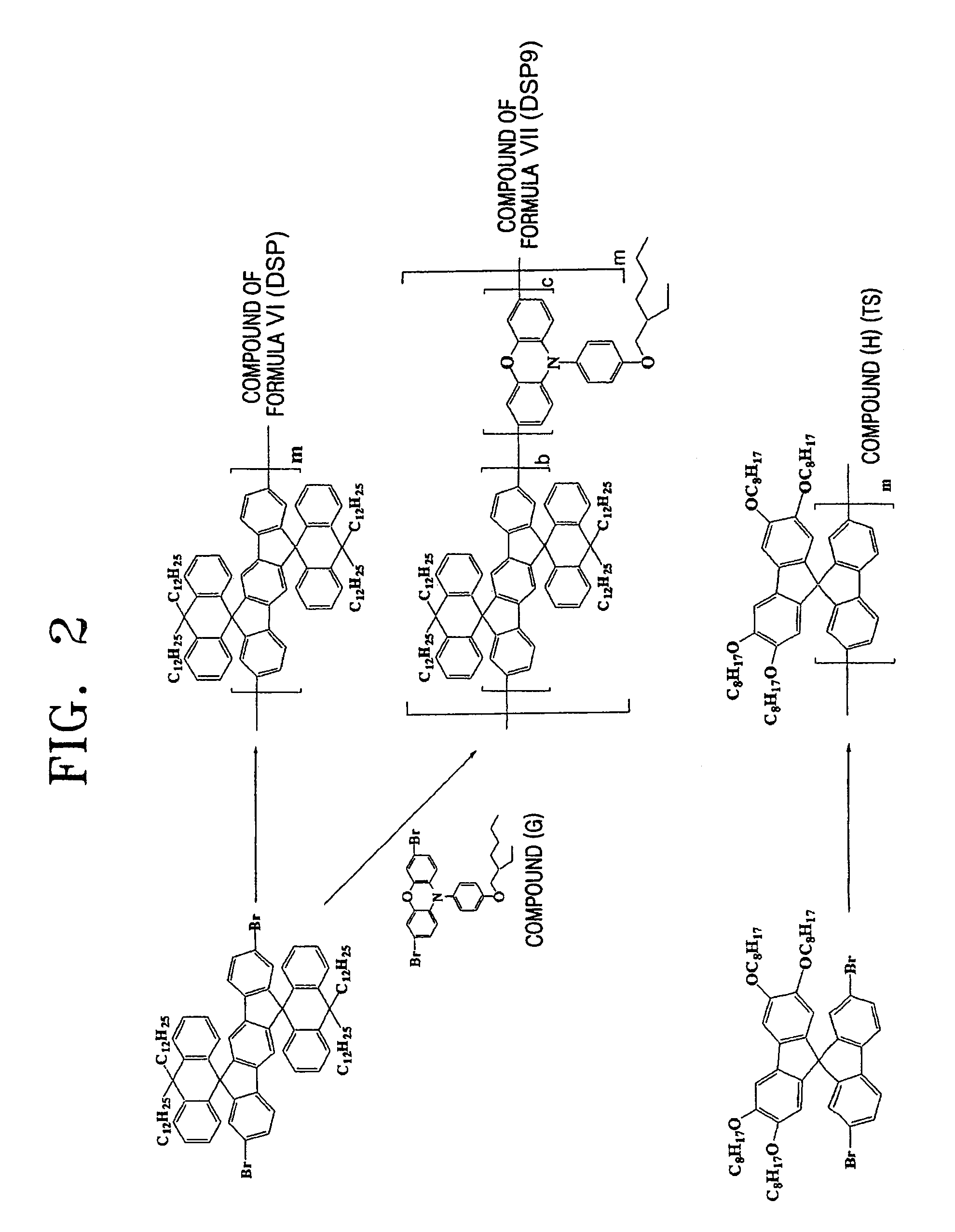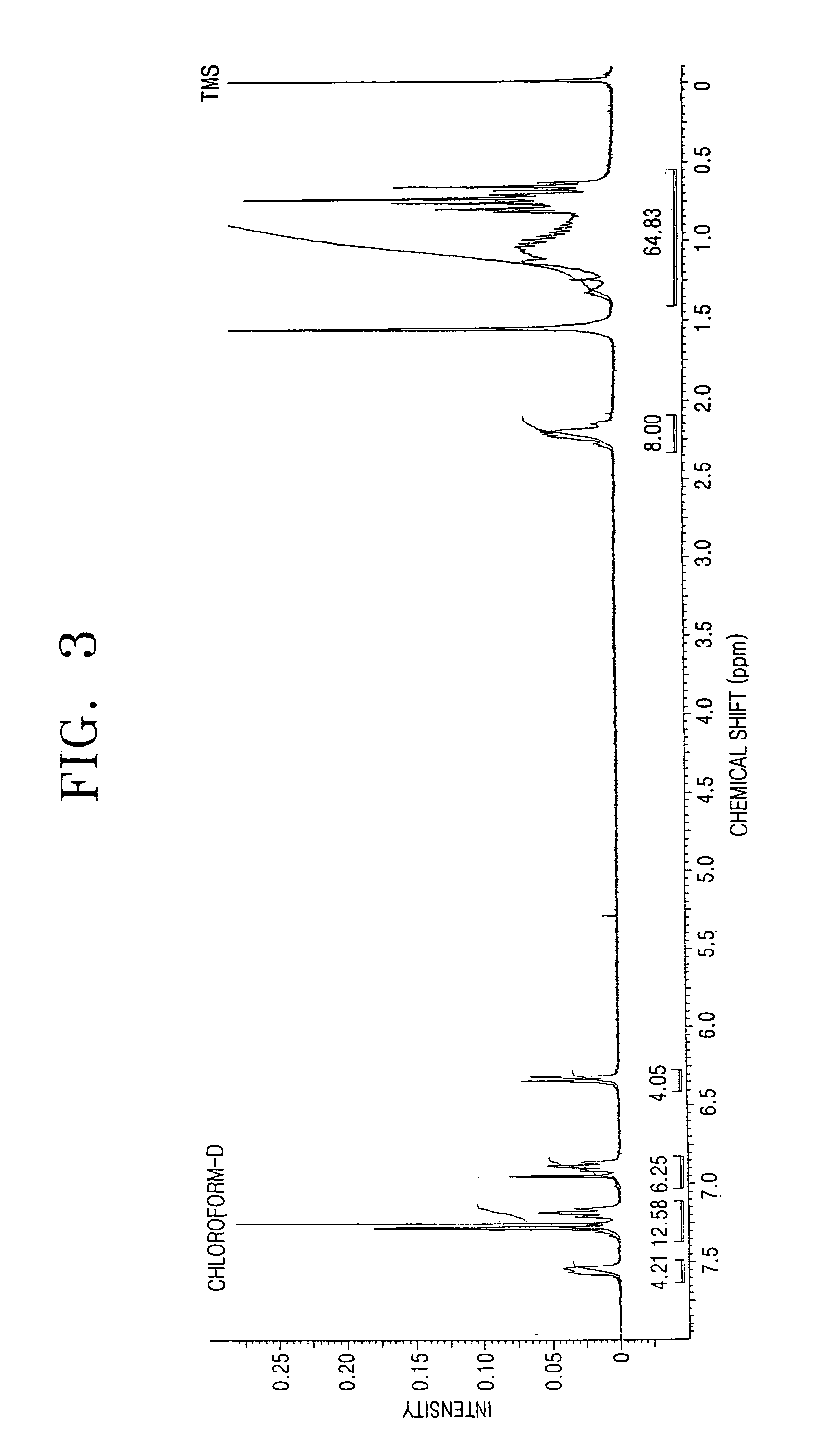Light-emitting polymer and organoelectroluminescent display using the same
a technology of light-emitting polymer and organic electroluminescent display, which is applied in the direction of discharge tube/lamp details, solid-state devices, natural mineral layered products, etc., can solve the problems of high driving voltage, low efficiency, and low color purity, and achieve the effect of improving light-emitting polymer
- Summary
- Abstract
- Description
- Claims
- Application Information
AI Technical Summary
Benefits of technology
Problems solved by technology
Method used
Image
Examples
preparation example 1
Preparation of Compound (F)
(1) Preparation of Compound (A)
[0078]13.20 g (50 mmol) of dibromoxylene was dissolved in 300 ml of tetrahydrofuran (THF), and then the temperature of a reactor was conditioned to −80° C. Then, 10.89 g (0.17 mol) of a tert-butylinium were dropped to the resulting reaction mixture. After completion of dropping, the temperature of the reactor was increased to −40° C., and the mixture was stirred for 12 hours. Then, the temperature of the reactor was again decreased to −80° C., 31.63 g (0.17 mol) of 2-isopropoxy-4,4,5,5-tetramethyl-1,3,2-dioxaborane was poured into the reactor, and the temperature of the reactor was slowly increased to room temperature. The reaction mixture was neutralized with an aqueous solution of HCl, and then was extracted with ether. The extracted organic layer was recrystallized with a hexane to obtain 8.95 g (yield: 50%) of the compound (A) as a white powder.
(2) Preparation of Compound (B)
[0079]7.16 g (20 mmol) of the compound (A) and ...
preparation example 2
Preparation of the Blue Light-Emitting Polymer
(1) Preparation of a Compound Represented by the Formula VI (DSP)
[0087]Air was several times removed from inside Schlenk flask, water was completely removed by refluxing with N2, and then 880 mg (3.2 mmol) of bis(1,5-cyclooctadiene)nickel (0) (hereinafter referred to “Ni(COD)”) and 500 mg (3.2 mmol) of bipyridal were added in a glove box, and air was again several times removed from inside the flask and the flask was refluxed with N2. Then, 10 ml of anhydrous dimethylfuran (DMF), 346 mg (3.2 mmol) of 1,5-cyclooctadiene (COD) and 10 ml of anhydrous toluene were added under stream of N2. The mixture was stirred at 80° C. for 30 minutes, and 2.25 g (0.16 mmol) of the compound (F) obtained from the preparation example 1 was diluted in 10 ml of toluene and added to the mixture. Then, 10 ml of toluene was added while washing materials smeared in the wall of the flask, and the mixture was stirred at 80° C. for 4 days. After stirring, the temper...
example 1
Preparation of an Organic Electroluminescent Display
[0093]First, a clear electrode substrate in which ITO (indium-tin oxide) was coated on glass substrate was washed cleanly, and ITO was patterned in desired pattern using a photoresist resin and an etchant, and washed again cleanly. Barton P 4083 (manufactured by Bayer Co.) (PEDOT) was coated thereon to a thickness of about 500 to 1,100 Å as a conducting buffer layer, and then the coat was baked at 180° C. for about an hour.
[0094]Then, 0.1 parts by weight of the polymer of the formula VI prepared by the preparation example 2 was dissolved in 99.9 parts by weight of toluene to provide a composition for forming a light-emitting layer, and the composition was spin-coated on the buffer layer, and then after baking a solvent was completely removed in vacuum oven to form a light-emitting layer. Herein, the composition for forming the light-emitting layer was filtered through a 0.2 mm filter, and the thickness of the light-emitting layer w...
PUM
| Property | Measurement | Unit |
|---|---|---|
| mole % | aaaaa | aaaaa |
| mole % | aaaaa | aaaaa |
| molecular weight distribution | aaaaa | aaaaa |
Abstract
Description
Claims
Application Information
 Login to View More
Login to View More - R&D
- Intellectual Property
- Life Sciences
- Materials
- Tech Scout
- Unparalleled Data Quality
- Higher Quality Content
- 60% Fewer Hallucinations
Browse by: Latest US Patents, China's latest patents, Technical Efficacy Thesaurus, Application Domain, Technology Topic, Popular Technical Reports.
© 2025 PatSnap. All rights reserved.Legal|Privacy policy|Modern Slavery Act Transparency Statement|Sitemap|About US| Contact US: help@patsnap.com



